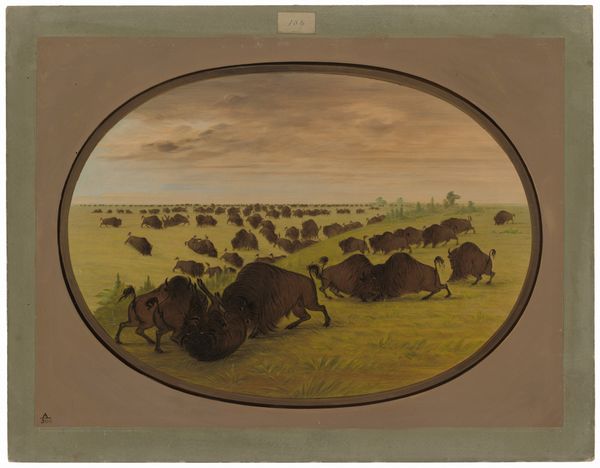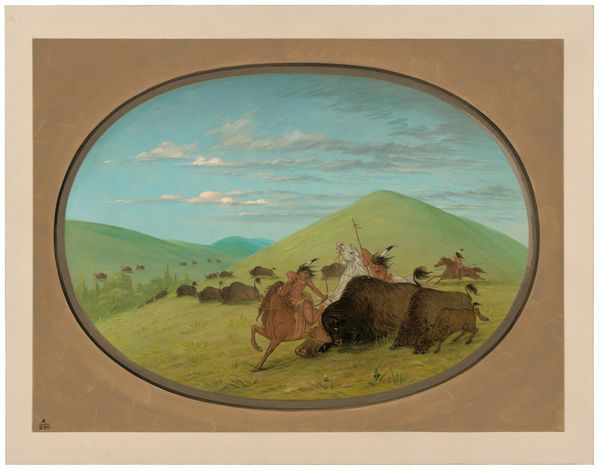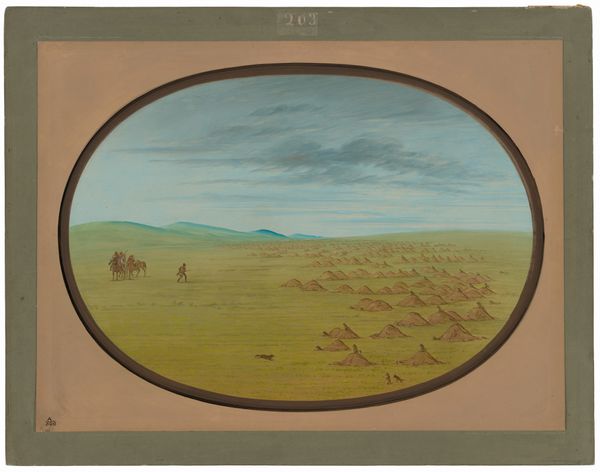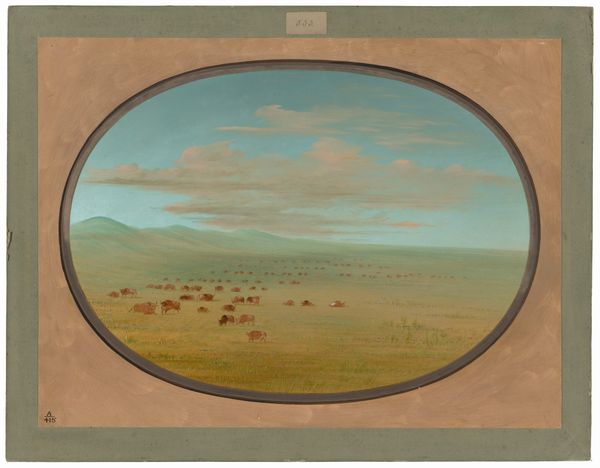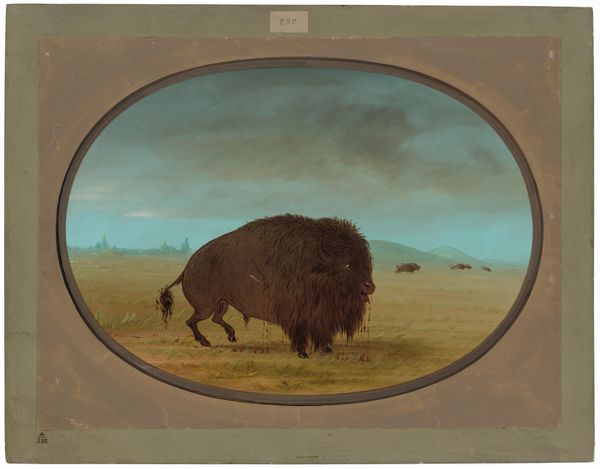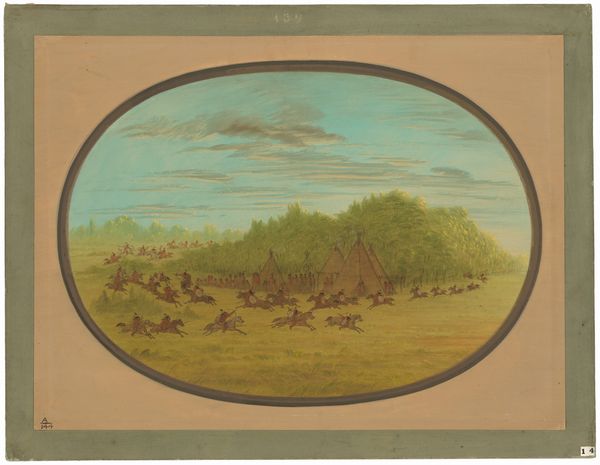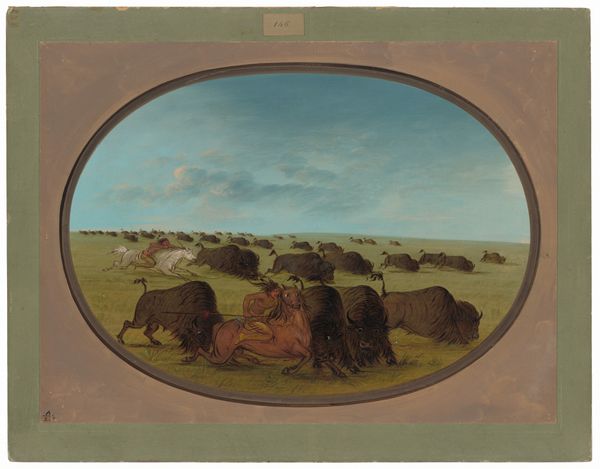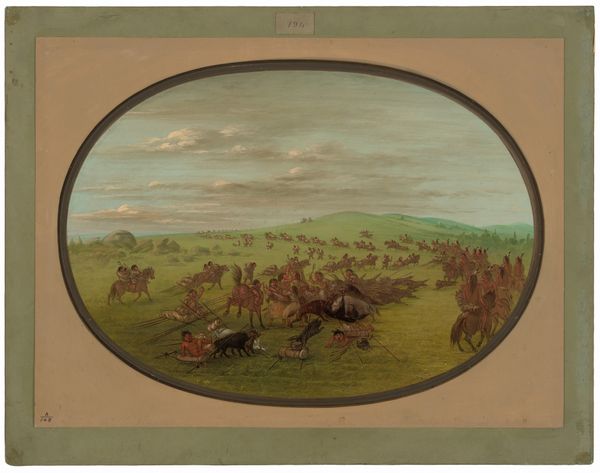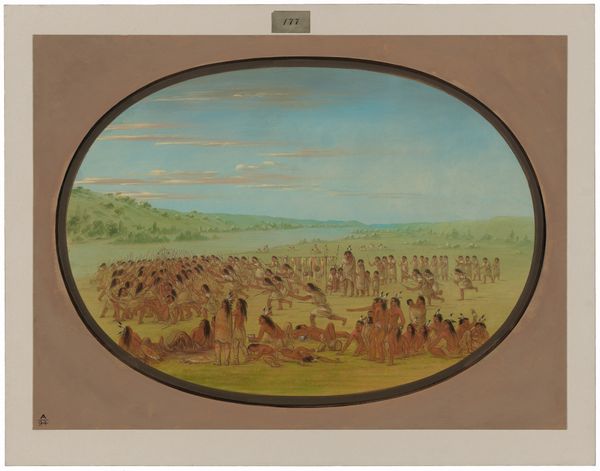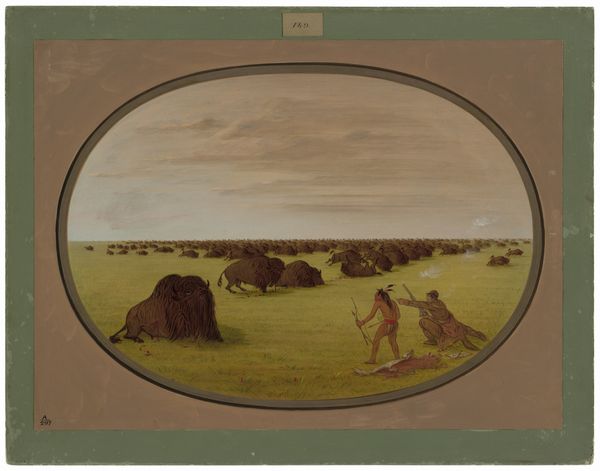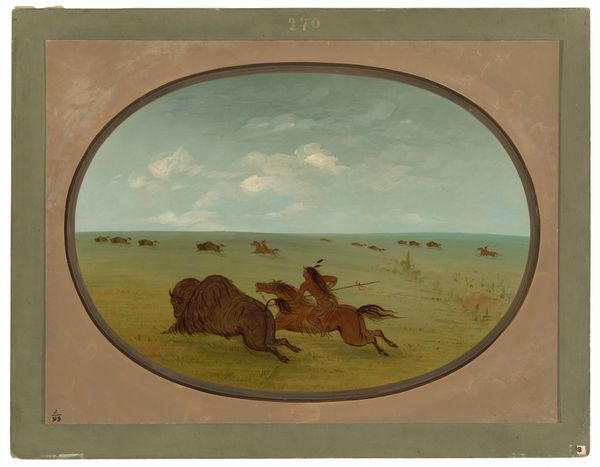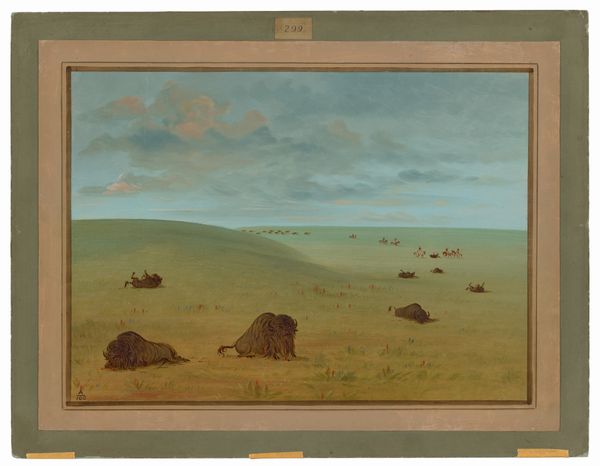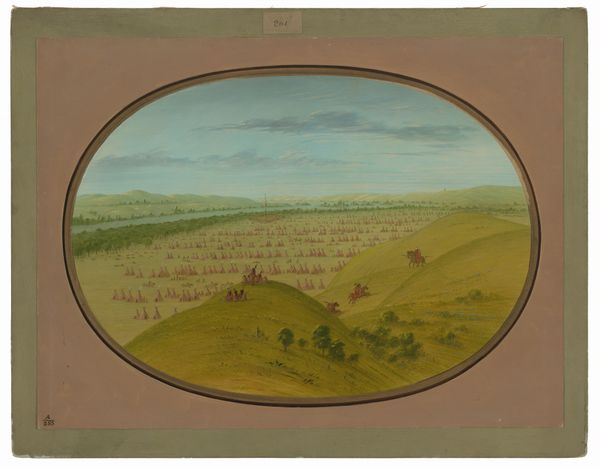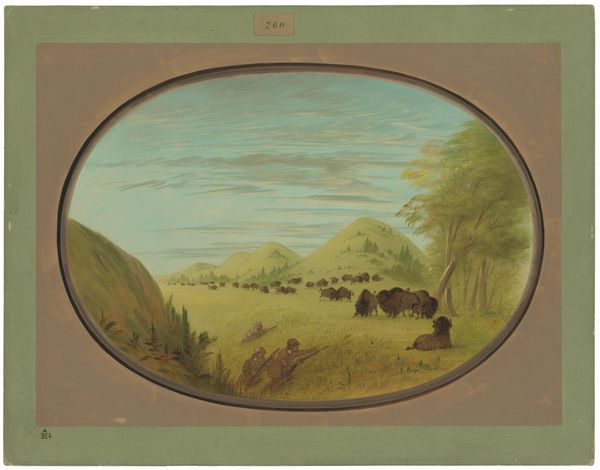
painting, gouache
#
water colours
#
painting
#
gouache
#
landscape
#
oil painting
#
watercolor
Dimensions: overall: 46.7 x 62.5 cm (18 3/8 x 24 5/8 in.)
Copyright: National Gallery of Art: CC0 1.0
Editor: So, we have here George Catlin's "A Buffalo Wallow," dating roughly between 1861 and 1869. It's a watercolor and oil painting that portrays a herd of buffalo across a plain. I'm struck by how it feels both expansive and strangely… contained, like a diorama in its oval frame. What's your take on it? Curator: Well, framing is crucial here. The oval shape itself is a visual tool. It references a specific historical context - the practice of depicting romanticized landscapes and portraits, especially prevalent in 19th-century decorative arts intended for the domestic sphere. The seemingly innocent portrayal of these animals needs also to be interpreted as documentation—or arguably a justification—of westward expansion during a period of tremendous conflict. Editor: A justification? That’s interesting. It appears peaceful, but what underlying message could it convey to viewers during that period? Curator: Precisely! It taps into the ideology of Manifest Destiny. These images of abundant buffalo populations visually implied limitless resources and fertile lands, legitimizing settlers' claims to those areas, thereby displacing indigenous communities and disrupting their ways of life. Consider the composition: what isn't shown? Where are the indigenous peoples? The narrative that the landscape is there for the taking ignores or conceals their presence. Editor: That's a perspective I hadn’t fully considered. So the 'peaceful' landscape actually hides a story of political and social tension? Curator: Exactly. And that hidden narrative is potent. Also consider the purpose of depicting wildlife - at the time this watercolor was created the number of bison in the area had dropped significantly because of westward expansion and government sponsored slaughtering. Do you think this image documents reality, or helps to bury it? Editor: Wow, I’m now seeing this landscape in a totally different light. It is more than just pleasing scenery, it represents socio-political conflicts of that time. Curator: And that tension underscores the importance of analyzing any image, no matter how bucolic it seems, within its historical and social framework. Editor: Right, you've definitely opened my eyes to how crucial that historical context is. Thanks!
Comments
No comments
Be the first to comment and join the conversation on the ultimate creative platform.
